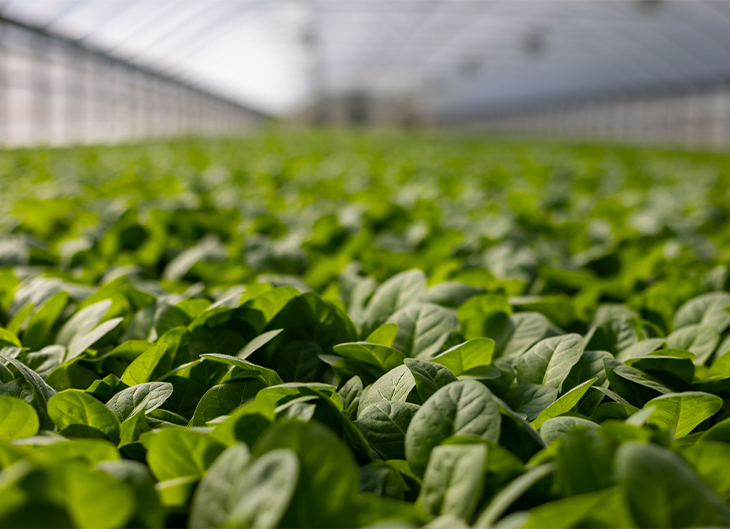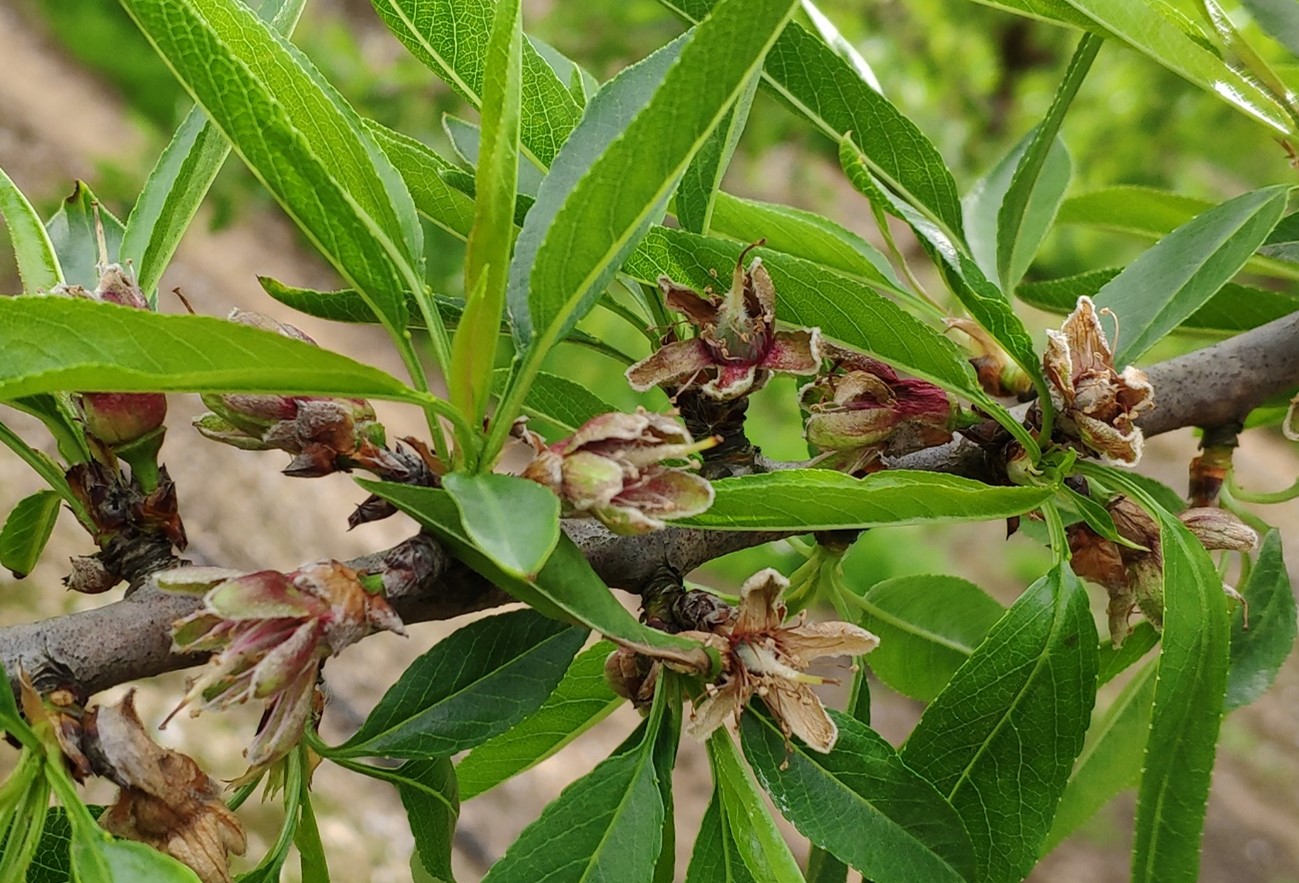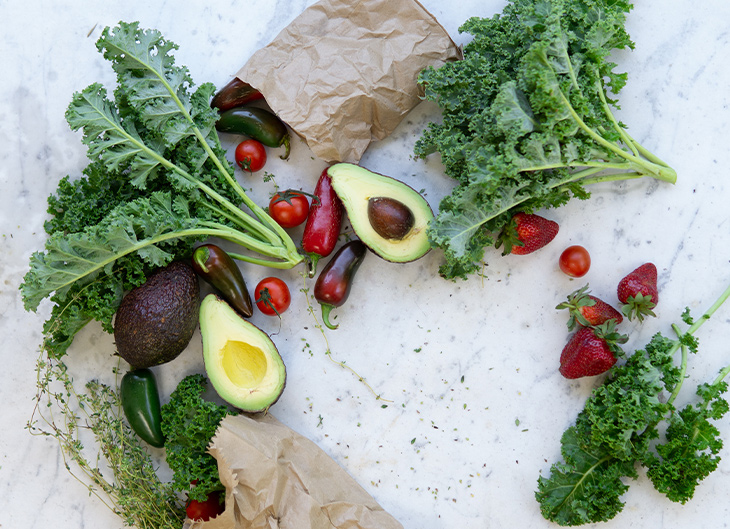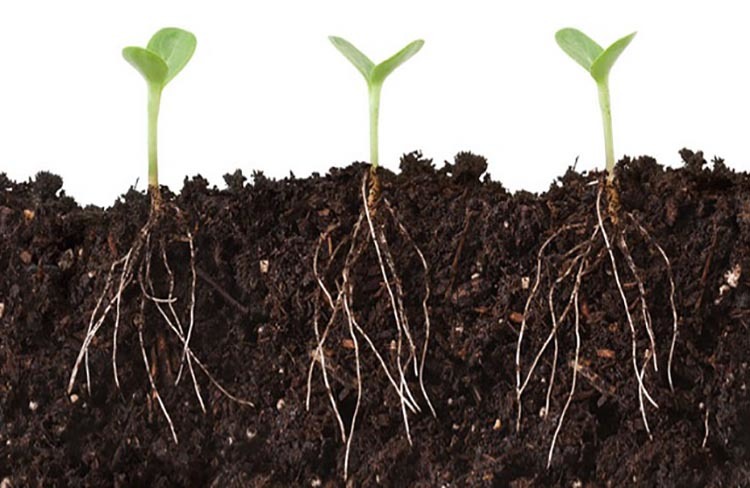
CORRIZ·AM®: a natural root stimulator capable of increasing the rate of mycorrhisation in commercial products based on arbuscular mycorrhiza.
Despite the heights that biological fertilisation has reached, there is still no effective way known to enhance the establishment of endomycorrhizal fungi in roots to guarantee the agronomic benefits of products based on these microorganisms. The purpose of this research was to evaluate the natural root-stimulating effect of CORRIZ-AM® by AGROMÉTODOS, S.A. on the colonisation capacity of different commercial mycorrhizal inoculants applied to tomato, raspberry and lettuce crops. To do so, a differential staining method was used that dyes the symbiotic fungus inside the root without colouring the root cells. Generally speaking, it was observed that when the natural root stimulator was applied to roots at a rate of 3 L/Ha, it was able to double the colonisation percentage of the different mycorrhizas contained in the commercial products applied to these crops.
BACKGROUND
Arbuscular mycorrhizas (AM) are soil fungi capable of entering the root cells of most plants, where they form structures (arbuscules) in which a two-way exchange of nutrients takes place that is beneficial to both the fungus and the plant. Through these structures, the host plant provides photosynthesised sugars to the fungus to enable the development of an external network of filaments (hyphae), whereby the fungus provides the plant with mineral nutrients and water that are not within the reach of the root system (Allen, 2007; Smith and Read, 2010). Thus, it has been shown that this symbiotic association acts as a supplement to the roots of the plant in the uptake of nutrients, especially phosphorus (Bucher, 2007), although to a lesser extent nitrogen (Tobar et al., 2004) and some micronutrients essential to the plant such as zinc or iron (Clark and Zeto, 2000). In addition, many studies have shown that root colonisation by AM has a positive influence on vigour under stress (Ruiz-Lozano, 2003) and phytohormone biosynthesis (Ludwig-Müller, 2010) and that it improves the plant’s defences against phytopathogenic microorganisms (Azcón-Aguilar and Barea, 1997).
However, despite the vast body of knowledge regarding this symbiosis in different crops of agronomic interest, there are still processes in the plant-fungus recognition and root colonisation stages that are not fully understood (Gadkar et al., 2001). The application of commercial mycorrhizal inoculants in agricultural production systems is therefore not a common practice. This is primarily due to the fact that, until now, the establishment of commercial AM at the roots is not always successful under field conditions.
At present, despite the fact that some factors are known to negatively influence the colonisation of plants by AM, such as the inhibition of symbiosis due to high levels of phosphorus in the soil (De Miranda and Harris, 1994), or the negative effects stemming from the use of pesticides (Druille et al., 2013), the mechanisms for stimulating mycorrhizas so that they colonise the roots effectively are still not well known. Until now, the results obtained in trials to evaluate the effects of adding different natural organic products, such as peat, manure or different types of charcoal, had contradictory and variable results, with increases and reductions in the percentage of mycorrhisation depending on the type of organic modifier applied or the plant species used in the research (Barea et al., 2002; Muthukumar and Udaiyan, 2000; Ma et al., 2007; Eschen et al., 2013; Yang et al., 2017).
Among the methods available to evaluate how different agricultural practices affect the degree of mycorrhisation obtained after the exogenous application of commercial AMs, there are different staining techniques that allow the components of the fungus inside the root to be dyed without colouring the root cells. All the different staining techniques, although differentiated by the type of dye used (i.e. Trypan Blue, Acid Fuchsin, Black Chlorazol E, etc.), are essentially based on a similar 4-stage process in which roots smaller than 1 cm are subjected to: 1) whitening-bleaching, 2) acidification, 3) staining with the dye and 4) elimination of excess dye (Hamel et al., 1990). Thus, by randomly sampling a defined number of root fragments and applying these staining techniques, it is possible to determine the percentage of those fragments where an effective symbiosis has been established (Giovannetti and Mosse, 1980).
PURPOSE OF THE TESTS
CORRIZ·AM® is a powerful root-stimulating agent based on natural organic molecules which, in addition to favouring rapid multiplication and prolongation of the roots, act as recognition signals for the mycorrhizal fungi. The purpose of this article is to evaluate how the application of our organic root-stimulating system affects the colonisation capacity of different commercial AMs applied (according to the manufacturer’s recommended dose) to tomato, raspberry and lettuce crops under different test conditions. To this end, three different tests were carried out using the differential staining technique of Vierheilig et al. (1998) to evaluate the effect of the root stimulator under study on the percentage of mycorrhisation detected in the roots of the different crops.
EXPERIMENTAL TESTS
TEST 1
To evaluate the effect of the organic root stimulator on colonisation capacity when applied at the beginning of the application of a commercial mycorrhizal inoculant, a test was conducted as described in Table 1.
| Location | Sanlúcar de Barrameda (Cádiz) |
| Crop – Variety | Tomato (Solanum lycopersicum) – ‘Pear’ |
| Production system | Greenhouse |
| AM species (concentration) | Glomus intraradices (4000 spores/gram) |
| CORRIZ·AM® application | Applied to the root, 3 l/ha 30 days after application of the mycorrhizal inoculant |
| Sampling of roots | 72 days after mycorrhisation |
Table 1: Experimental design of test 1.
Results
At the end of the test, the rate of mycorrhisation in the plants treated with the tested root stimulator increased nearly 4 times with respect to the rate observed in the plants on the plot where the product was not applied (Figure 1). Figure 2 shows the images of the symbiotic structures of G. intraradices observed in the analysed roots using different stains.
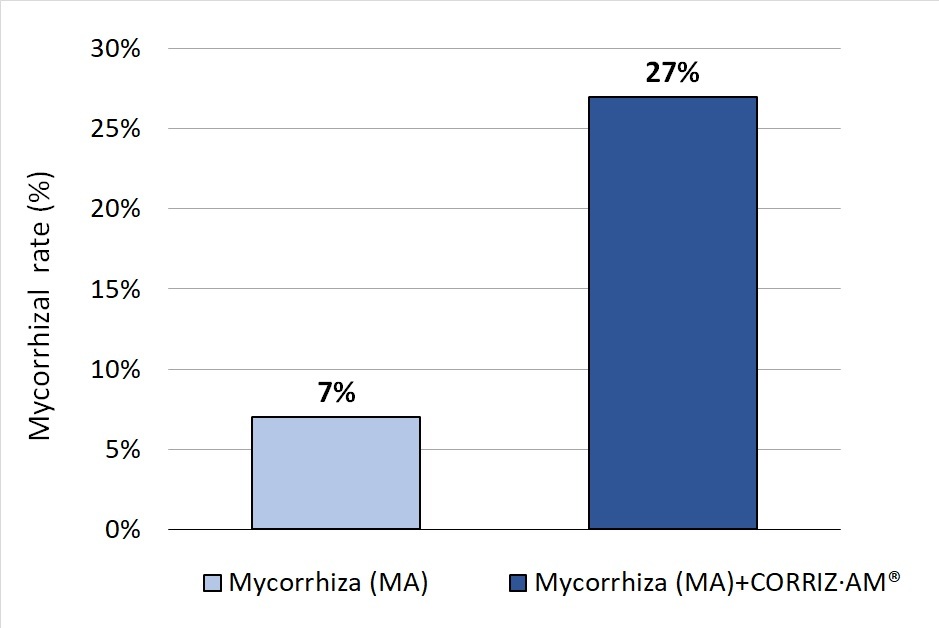
(). Average data from three replicates.
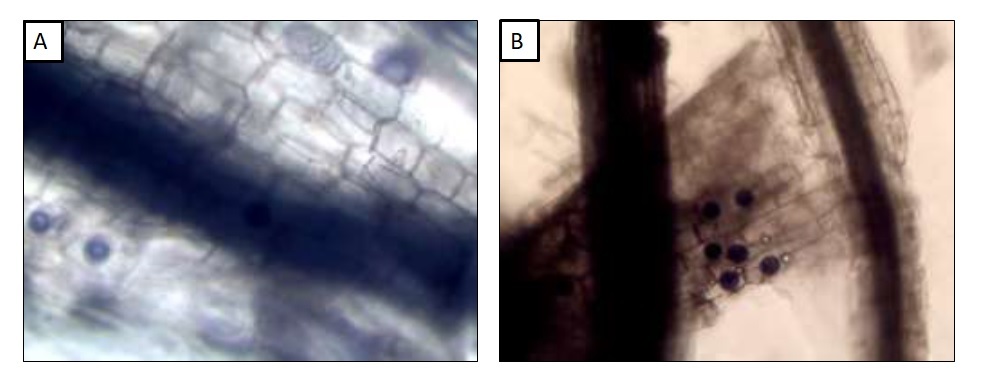
Discussion
Although the percentage of mycorrhisation considered normal in tomatoes of the Glomus sp. genus varies depending on the variety of plant, size and soil conditions, mycorrhisation values below 10% are considered insufficient for the plant to be able to benefit from the symbiotic advantages provided by the AM (Gao et al., 2001). Thus, an effective mycorrhisation level is achieved in tomato plants through the application of the tested root stimulator.
The benefits of mycorrhizas for tomato crops have been widely demonstrated both in laboratory studies and field trials. For example, AM improves the assimilation of phosphorus (Cress et al., 1979; Merrild et al., 2013), increases tolerance to salt stress (Al-Karaki, 2000) and drought (Bowles et al., 2016), and increases the nutritional value of the fruit (Hart et al., 2015). In all studies where these improvements in tomato crops were demonstrated, the percentage of mycorrhisation far exceeded 10% of the roots examined.
TEST 2
This test was designed (see Table 2) to assess the capacity of the organic root stimulator to stimulate mycorrhisation despite being applied one month after the addition of commercial AM.
| Location | Moguer (Huelva) |
| Crop – Variety | Frambuesa (Rubus ideaus) – ‘Adelita’ |
| Production system | Under cover / plastic |
| AM species (concentration) | Glomus intraradices (4.000 espores/gram) |
| 1st Application of CORRIZ-AM® | Applied to the root, 3 l/ha 30 days after application of the mycorrhizal inoculant |
| 2nd Application of CORRIZ-AM® | Applied to the root, 3 l/ha 65 days after application of the mycorrhizal inoculant |
| Sampling of roots | 20 days after each CORRIZ-AM® application |
Table 2: Under cover / plastic.
Results
Despite the fact that 30 days had elapsed since the application of the commercial AM to the crop, the application of the root stimulator was successful in increasing mycorrhisation by 14% in 20 days (Figure 3).
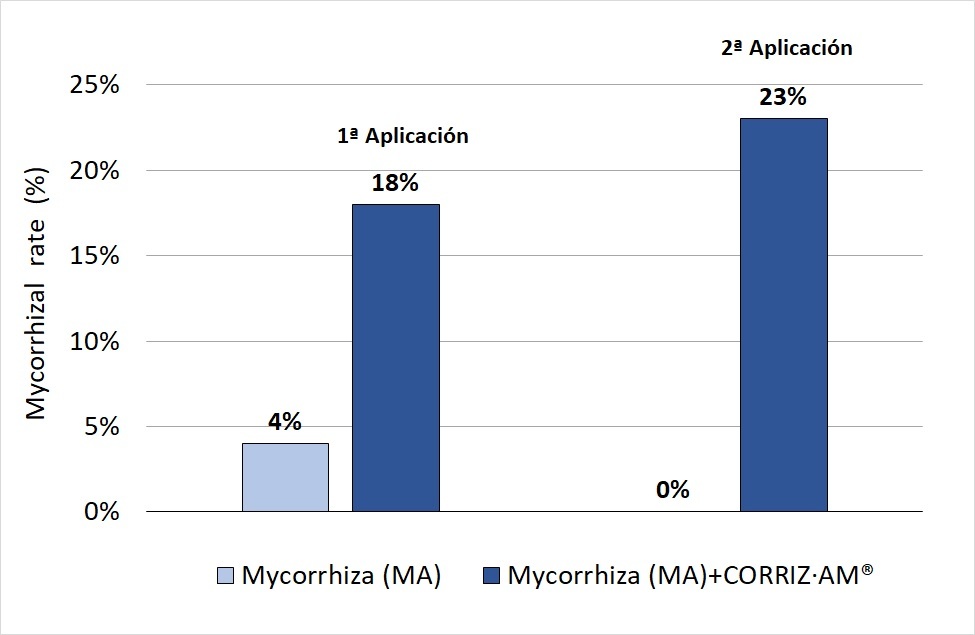
A second application of the root stimulator administered 65 days after the application of AM allowed the symbiotic association in the treated plants to not just remain but increase its level to more than 20%, while no symbiotic structures were detected at the end of the trial in the plants on the land not treated with the root stimulator (Figures 4).
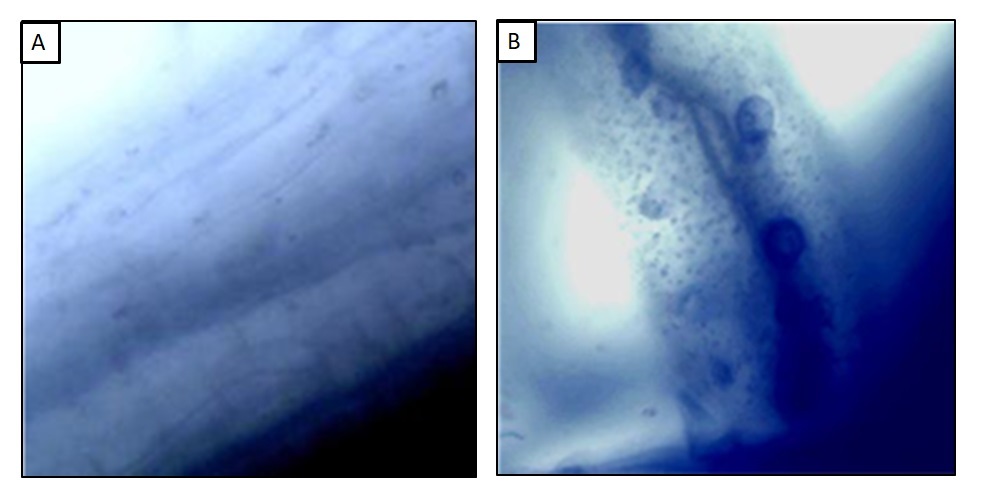
Discussion
Compared to horticultural crops or other berries, including strawberries, there are far fewer studies on AM applied to raspberry crops. However, a study carried out with nine different species of AM demonstrated how the ‘Glen Prosen’ raspberry variety was able to achieve mycorrhisation in 8 weeks using the Glomus sp. Genus species, with a mycorrhisation rate higher than 20% (Taylor and Harris, 2000). Among the three species of the Glomus sp. genus studied in the aforementioned test, G. intraradices was the one that colonised the raspberry roots with the greatest intensity, maintaining a mycorrhisation rate of more than 20% at 15 weeks. In this regard, the mycorrhisation rate observed in this test following the 2nd application of the root stimulator is consistent with the results previously observed by Taylor and Harris (2000), who also reported how this species of AM was able to significantly increase the concentration of phosphorus in plant shoots by 40% with respect to non-mycorrhised plants. Furthermore, Campos-Mota et al. (2004) evaluated the effect of mycorrhisation in raspberries of the ‘Autumn Bliss’ variety, observing that the improvement in phosphoric nutrition resulted in an increase in the number of total fruits, in which the ratio of total soluble solids to titratable acidity was elevated.
TEST 3
As described in Table 3, a third test was carried out with the aim of evaluating the capacity of the organic root stimulator to stimulate the mycorrhisation of 4 different commercial mycorrhizal inoculants (Table 4).
| Location | Los Palacios and Villafranca (Seville) |
| Crop – Variety | Lettuce (Lactuca sativa) – ‘Isasa’. |
| Production system | Outdoors / Pots |
| AM species (concentration) | See table 4 |
| CORRIZ·AM ® application | Applied to the root, 3 l/ha 30 days after application of the mycorrhizal inoculant |
| Sampling of roots | 35 days after mycorrhisation |
Table 3: Experimental design of test 3.
| Commercial inoculum | Mushroom species | Concentration |
| M1 | Glomus iranicum | 1,2 x 10⁴ / 100 ml |
| M2 | Glomus intraradices | 800 spores / g |
| M3 | Glomus intraradices | 4.000 spores / g |
| M4 | Glomus intraradices | 5 x 10⁶ / 100 ml |
Table 4: Commercial products based on mycorrhizae used in test 3.
Results
After 35 days, a mycorrhisation percentage between 6.7% and 24.7% was detected in the roots of all the plants that received the different commercial mycorrhizal inoculants (Figure 5).
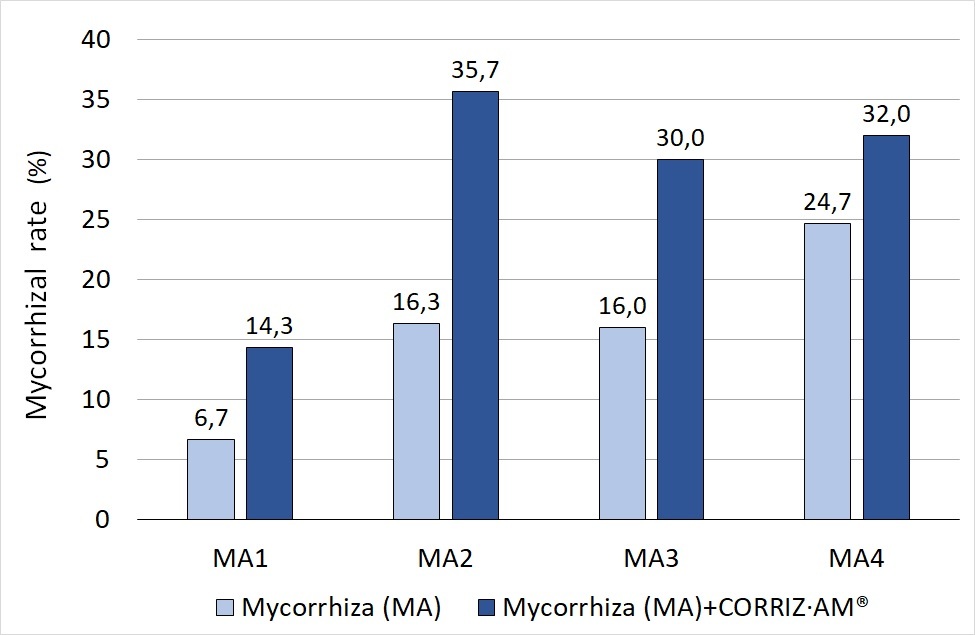
Figure 5. Mycorrhisation at the end of the test in lettuce plants treated with four different commercial mycorrhizal inoculants (MA). Roots of plants without CORRIZ-AM® () and with CORRIZ-AM® (). Average data from three replicates.
When the root stimulator was applied to the different pots previously treated with different commercial mycorrhizal inoculants, in all cases a significant increase was observed in the percentage of mycorrhised roots.
When the tested root stimulator was applied, for three of the inoculants tested the rate of mycorrhisation observed was about twice that observed in plants treated with the commercial inoculant alone. In particular, the highest rate of mycorrhisation was observed when the root stimulator was applied in conjunction with the mycorrhizas of the G. intraradices species of the commercial AM2 inoculant, which also exhibited the greatest increase in the mycorrhisation rate compared to the one observed in the roots not treated with the root stimulator (Figure 6). On the other hand, in the case of AM4, which by itself had a mycorrhisation rate of over 20%, the tested root stimulator was not shown to double its mycorrhisation capacity but still managed to increase it by 22%, bringing it above 30%. This result can be explained by the fact that the AM4 inoculant was the one with the highest concentration of AM.
Discussion
There is an abundance of research on lettuce cultivation which shows that a mycorrhisation rate higher than 30% improves this plant’s tolerance to salinity (Aroca et al., 2013; Vicente-Sánchez et al., 2014) and increases water absorption under situations of water stress (Marulanda et al., 2003).
Similar to the pot test performed with the root stimulator, using a pot cultivation methodology, two recent studies (Baslam et al., 2011; 2013) have shown that a commercial inoculant composed of a mixture of G. intraradices and G. mosseae was able to increase the growth and nutritional quality of lettuce seedlings, as well as their chlorophyll, carotenoids and vitamin E content, thanks to root mycorrhisation percentages above 30%.
Under field conditions, the efficacy of G. intraradices in increasing root and foliar development of lettuce plants, as well as their phosphorus and iron content, was also proved by the test performed by Kohler et al. (2006).
In terms of studies carried out to compare the effects of different commercial inoculants, Garmendia et al. (2014) compared the effects of a commercial product in lettuce seedlings consisting of a mixture of G. intraradices and G. mosseae, as opposed to another one based only on G. intraradices. After 3 months of growth they observed a greater rate of mycorrhisation in lettuce treated with the inoculant based on the G. intraradices species, also coinciding with higher growth rates and chlorophyll and phosphorus content. Although the tested root stimulator enhanced the colonisation of the roots with both G. iranicum and G. intraradices, the mycorrhisation rates were higher in plants treated with commercial inoculants using G. intraradices.
CONCLUSIONS
Based on the results, it can be affirmed that CORRIZ-AM® by AGROMÉTODOS, S.A. doubles the rate of mycorrhisation achieved compared to the use of only mycorrhizal inoculant when applied three days after the application of mycorrhizas to the crop and when applied 30 days after mycorrhisation. It was also observed that a second application of this product enabled the mycorrhisation rate to be maintained on the roots of crops that struggle to achieve mycorrhisation, such as raspberries. The organic root stimulator also promotes root colonisation of different species of mycorrhizas contained in different commercial products.

